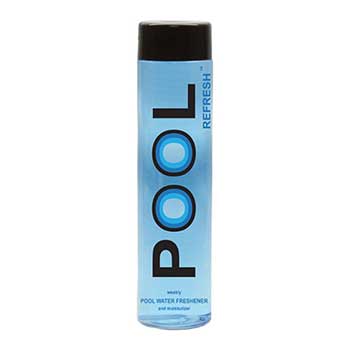With the sun shining and the temperatures rising, you might be thinking that it’s about time to open the pool. Before you dive in deep, take a look at these helpful steps to make sure you don’t miss a thing.
1. Clean up and prep your yard.
Before you get started on the pool area, survey your yard and garden. Mow the lawn, prune your flowers, trim the trees and do any desired landscaping beforehand to limit the amount of dirt and grass blowing into the pool once it’s opened up. Have a look to make sure your deck, furniture and pool equipment survived the winter in good condition as well.
2. Inventory your pool chemicals.
You’ll want to have these on hand before starting to open your pool:
- Water test kit or reagents
- Chlorine or sanitizer of your choice
- Water balancers (such as pH increaser, pH decreaser, alkalinity increaser, and calcium increaser)
- Pool cleaner
- A pool opening kit *optional - an easy to use kit that comes with chlorine, clarifier, and a water treatment to get your pool water off to a clean start
3. Clean and remove your pool cover.
Remove as much debris from the top of the cover as possible, then brush it down while there’s still some water on top. Once it’s clean, drain all the water off the top. Remove any security devices or cords that may be connected, then remove your cover and safely store it for the summer.
4. Give your pool a deep clean.
Clear out any debris in the water using a skimmer net, then use your vacuum to do a more thorough clean of the pool floor. Use a pool cleaner to get rid of any acquired algae, scale, or calcium stains on the pool walls.
☆ Warning: Do not use household cleaners in your pool; even the trace of them can have serious chemical interactions with the pool chemicals you’ll be adding
5. Dewinterize your pool.
Remove freeze plugs and ice guards in the returns and skimmers. Make sure all drain plugs that were removed in the fall are reinstalled on your pump, heater, filter. Ensure that all intake and return valves are open.
6. Refill your water about 1/2 way up to the skimmer. Remember to prime your pool pump and pool filter to avoid air locks by adding water directly to the suction lines and pump until no air bubbles are visible.
7. Shock the water.
Use a non-chlorine based shock to remove any lingering bacteria in the water. Wait at least 3 hours.
8. Test and balance pool water.
First adjust pH using increaser or decreaser as required. Then test and adjust alkalinity using an alkalinity increaser if it’s low or use pH decreaser if alkalinity is too high. Next add and adjust sanitizer to required level.
9. Let water recirculate
in the pool for 24 hours.
10. Finish up
the next day by adding algaecide if desired (follow the directions on the bottle, some may require leaving product in untouched for a few hours). Also remember to replace your chemical feeder in the water and reinstall any dive boards, ladders or parts that may still be loose.
Helpful things to consider:

Pool Stain Out
Remove stains from your pool walls or wherever stains are present

Swimming Pool Refresh
A water refresher and skin moisturizer to combat negative effects from chlorine

Cover Free
This treatment slows water evaporation to conserve water and help retain heat
Final step?
Enjoy your beautiful pool all summer long!
